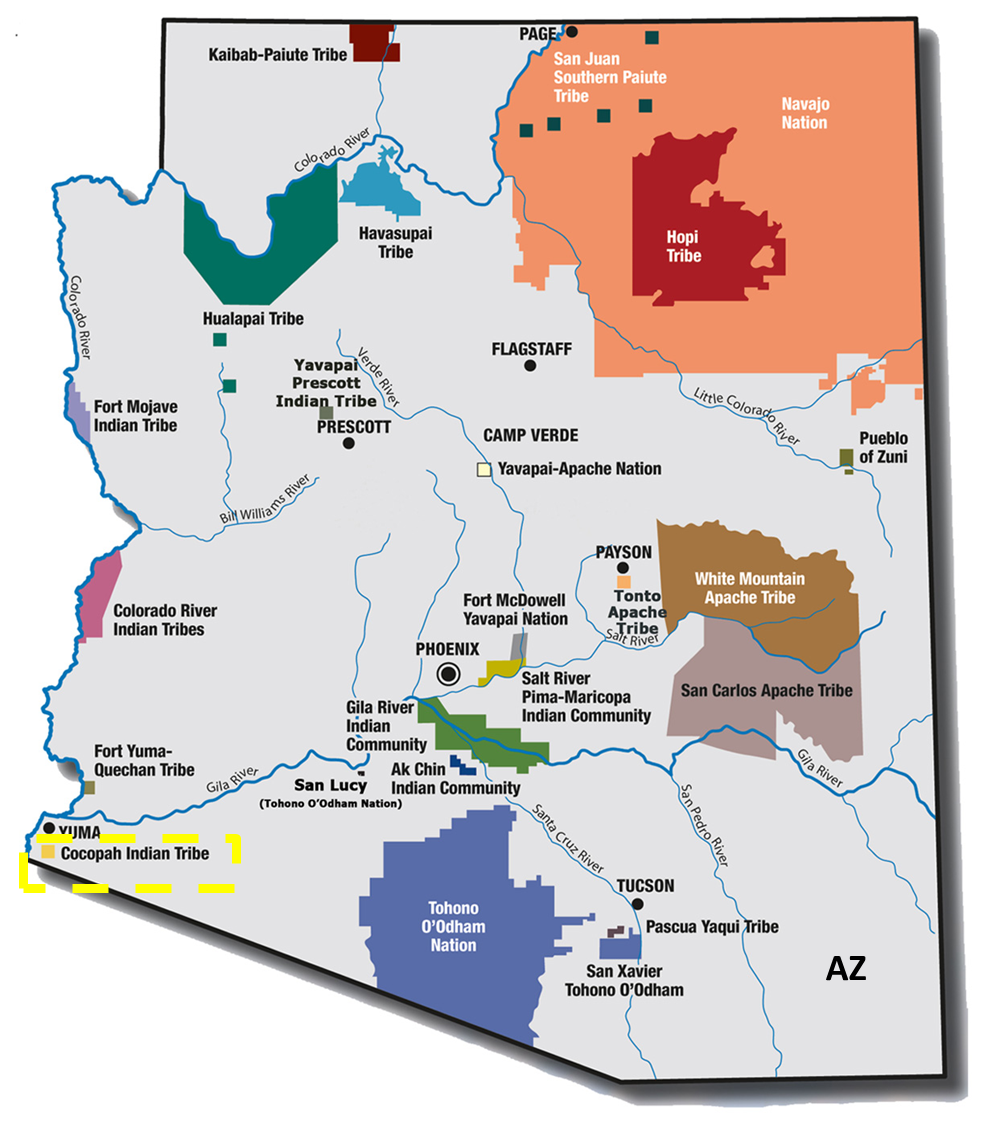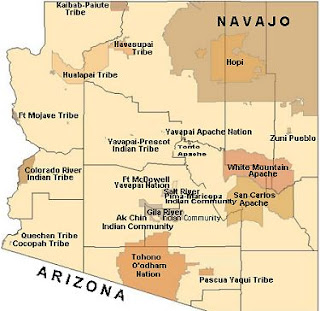Arizona’s Tapestry of Tribes: A Guide to the State’s Indian Reservations
Arizona’s Tapestry of Tribes: A Guide to the State’s Indian Reservations

Arizona, a state known for its dramatic landscapes and vibrant history, is also home to a rich tapestry of Native American cultures. Scattered across the state are 22 federally recognized tribes, each with its own unique traditions, languages, and stories. Navigating this diverse landscape can be a bit daunting, but fear not! We’ve got you covered with this comprehensive guide to Arizona’s Indian Reservations.
A Land of Contrasts:
Related Articles: Arizona’s Tapestry of Tribes: A Guide to the State’s Indian Reservations
- Uncover the Rich Tapestry of Indian Tribes in Colorado: A Journey of Discovery
- The Land Of The Navajo: Unpacking The Largest Reservation In The US
- The Land Of The Navajo: Unveiling The Largest Indian Reservation In The US
- Beyond The Stereotypes: Exploring Oklahoma’s Vibrant Indian Reservations
- Indian Reservation Cigarettes Near Me PriceTitle
From the towering red rocks of Sedona to the sun-drenched deserts of the southwest, Arizona’s geography is as varied as its Native American communities. These reservations are not just geographical entities; they’re living, breathing cultural hubs where ancient traditions and modern life intertwine. Some reservations are tucked away in remote corners, accessible only by winding dirt roads, while others are located near bustling cities, offering a glimpse into Native American life for those who want to learn more.
The Tribes of Arizona:
Each of Arizona’s 22 tribes has its own distinct history and culture. From the Navajo Nation, the largest reservation in the United States, to the tiny Havasupai Tribe known for its breathtaking blue-green waterfalls, each community offers a unique window into the past and present of Native American life.
Exploring Arizona’s Reservations:
1. The Navajo Nation:
Spanning nearly 27,000 square miles across Arizona, Utah, and New Mexico, the Navajo Nation is a must-see for any visitor to the state. Here, you can experience the rich cultural heritage of the Navajo people firsthand. Visit the Navajo Nation Museum in Window Rock, Arizona, to learn about their history, art, and traditions. Don’t miss the opportunity to witness a traditional Navajo rug weaving demonstration or purchase handcrafted jewelry and pottery at the many roadside shops. For those seeking adventure, the Navajo Nation offers stunning hiking trails, horseback riding, and even opportunities to learn traditional Navajo survival skills.
2. The Hopi Reservation:
Located within the Navajo Nation, the Hopi Reservation is a unique cultural enclave known for its vibrant pottery, ceremonial dances, and ancient villages. The Hopi people have lived in this region for centuries, preserving their traditions and language. Visit the Hopi Cultural Center in Second Mesa, Arizona, to learn about their history, art, and beliefs. Take a guided tour of the mesa villages, marveling at the traditional adobe houses and the breathtaking views of the surrounding landscape. The Hopi Reservation is a place where you can experience the true spirit of Native American resilience and cultural preservation.

3. The Tohono O’odham Nation:
The Tohono O’odham Nation, spanning parts of Arizona and Sonora, Mexico, is a vast desert landscape where the Tohono O’odham people have thrived for centuries. Known for their traditional basket weaving, pottery, and intricate beadwork, the Tohono O’odham offer a glimpse into a way of life deeply connected to the desert. Visit the Tohono O’odham Cultural Center in Sells, Arizona, to learn about their history, language, and traditions. Explore the Sonoran Desert Museum, located on the reservation, to discover the unique flora and fauna of this arid region.
4. The Yavapai-Apache Nation:
The Yavapai-Apache Nation, located in central Arizona, is a diverse community that embraces both modern and traditional ways of life. Visit the Yavapai-Apache Nation Cultural Center in Camp Verde, Arizona, to learn about their history, art, and traditions. The Yavapai-Apache Nation is also home to the Montezuma Castle National Monument, a stunning cliff dwelling built by the Sinagua people centuries ago. Explore the surrounding Tonto National Forest, offering breathtaking hiking trails and scenic overlooks.
5. The Fort Apache Indian Reservation:

The Fort Apache Indian Reservation, located in eastern Arizona, is home to the Apache people, known for their fierce independence and rich cultural heritage. Visit the Fort Apache Cultural Center and Museum in Whiteriver, Arizona, to learn about their history, language, and traditions. Explore the stunning scenery of the White Mountains, home to the Apache people for centuries.
Beyond the Reservations:
Beyond the reservations, Arizona boasts numerous museums and cultural centers dedicated to showcasing Native American art, history, and traditions. The Heard Museum in Phoenix is a must-visit, featuring an extensive collection of Native American art and artifacts from across the United States. The Arizona Science Center in Phoenix also features a dedicated exhibit on Native American cultures, highlighting their scientific knowledge and innovations.
Respectful Travel:
When visiting Arizona’s Indian Reservations, it’s important to remember that you are entering a sacred space. Respect the customs and traditions of the people you are visiting. Dress modestly, be mindful of your language and behavior, and ask permission before taking photographs. Engage in conversations with the local people, but be respectful of their privacy and avoid asking intrusive questions. Remember, you are a guest in their home, and your behavior reflects on all visitors who come after you.

FAQs about Arizona’s Indian Reservations:
1. Can I visit the reservations?
Yes, most reservations are open to visitors. However, it’s always a good idea to contact the tribal government or the reservation’s tourism office before your visit to get the latest information on accessibility and any specific guidelines.
2. What are the best ways to experience the reservations?
There are many ways to experience Arizona’s reservations, from guided tours to self-guided explorations. Some reservations offer cultural demonstrations, traditional dances, and craft workshops. Many also have museums, art galleries, and cultural centers that provide insight into their history and traditions.
3. Can I take photographs on the reservations?
It’s always a good idea to ask permission before taking photographs, especially of people or sacred sites. Be respectful of the local customs and traditions.
4. Are there any special events or festivals on the reservations?
Many reservations host cultural events and festivals throughout the year. Check the tribal government websites or tourism offices for details on upcoming events.
5. How can I support the Native American communities in Arizona?
One of the best ways to support Native American communities is to purchase their arts and crafts. Look for authentic pieces made by tribal members and avoid buying from vendors who may be selling counterfeit goods. You can also support Native American businesses and organizations by patronizing them and donating to their causes.
Conclusion:
Arizona’s Indian Reservations offer a unique opportunity to learn about the rich history, culture, and traditions of the state’s Native American communities. From the vast landscapes of the Navajo Nation to the ancient villages of the Hopi Reservation, each reservation offers a distinct perspective on Native American life. By visiting these reservations, you can gain a deeper understanding of Arizona’s past and present, and appreciate the enduring spirit of the Native American people. So, pack your bags, open your mind, and embark on a journey through the captivating tapestry of Arizona’s tribes!
Closure
Thus, we hope this article has provided valuable insights into Arizona’s Tapestry of Tribes: A Guide to the State’s Indian Reservations. We appreciate your attention to our article. See you in our next article!


